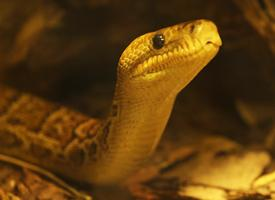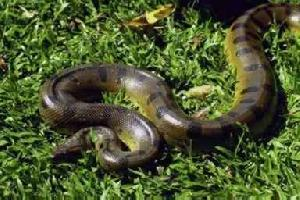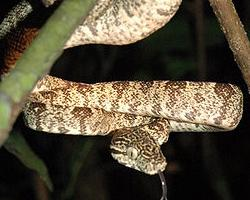
Cunoscut și ca
- Hroznýš kubánský
Greutăți și măsuri
| Lungime | 4 m |
|---|
Date biologice
| Durata de viață | de la 20 la 30 ani |
|---|---|
| Durata gestației | 6 m |
| Numărul de pui | 6 |
Descrierea animalului
The Cuban boa, scientifically known as Epicrates angulifer, is a fascinating species of boa native to the Caribbean island of Cuba. This non-venomous constrictor is one of the largest snakes found in the West Indies, showcasing a robust and muscular body that can grow to impressive lengths, with some individuals reaching up to 4 meters (13 feet), although the average size is generally around 2 to 3 meters (6.5 to 9.8 feet). Its size makes it the largest snake in its habitat, dominating the ecosystems it resides in.The appearance of the Cuban boa is characterized by its distinctive coloration and patterning, which serves as excellent camouflage within its natural environment. The snake's background color can vary from a range of browns to grays, overlaid with darker brown or black saddles or blotches that run along the length of its body. This patterning helps it blend seamlessly into the forest floor's dappled light, an adaptation that is crucial for its survival as both predator and prey.
Epicrates angulifer is known for its semi-arboreal lifestyle, meaning it spends a significant amount of time in trees, although it is also comfortable on the ground. This adaptability allows it to exploit a wide range of habitats within Cuba, from coastal areas to dense forests and even human-altered landscapes. Its arboreal nature is supported by its prehensile tail, which it skillfully uses to grasp and maneuver through the branches in search of food or shelter.
The diet of the Cuban boa is as varied as its habitat, consisting primarily of small mammals, birds, and even other reptiles. It is a constrictor, employing the method of coiling around its prey and suffocating it before consumption. This snake plays a crucial role in controlling the populations of its prey species, thereby maintaining the ecological balance within its environment.
Reproduction in Epicrates angulifer is ovoviviparous, meaning the females give birth to live young instead of laying eggs. The reproductive cycle is closely tied to the seasons, with mating typically occurring in the spring and the young being born in the late summer or early fall. A single litter can consist of anywhere from 6 to 40 young, depending on the size and health of the mother.
Despite its size and predatory prowess, the Cuban boa faces several threats from human activity. Habitat destruction, hunting for the pet trade, and persecution due to fear or misunderstanding have all contributed to its decline in the wild. Currently, Epicrates angulifer is classified as Near Threatened by the International Union for Conservation of Nature (IUCN), highlighting the need for continued conservation efforts to ensure its survival.
In conclusion, the Cuban boa (Epicrates angulifer) is a remarkable species that plays a vital role in its ecosystem. Its unique characteristics and adaptability have allowed it to thrive in various environments across Cuba. However, it faces significant challenges that threaten its existence. Conservation measures and further research are essential to protect this magnificent snake and the biodiversity of the regions it inhabits.
Animale similare
Fotografii noi cu animale
Top 10 animale
- Dolphin gull (Leucophaeus scoresbii)
- Diana monkey (Cercopithecus diana)
- Moustached guenon (Cercopithecus cephus)
- Galápagos tortoise (Geochelone nigra complex)
- Japanese macaque (Macaca fuscata)
- Stone loach (Barbatula barbatula)
- Russian tortoise (Testudo horsfieldii)
- Common flying dragon (Draco volans)
- Greek tortoise (Testudo graeca)
- Vendace (Coregonus albula)


